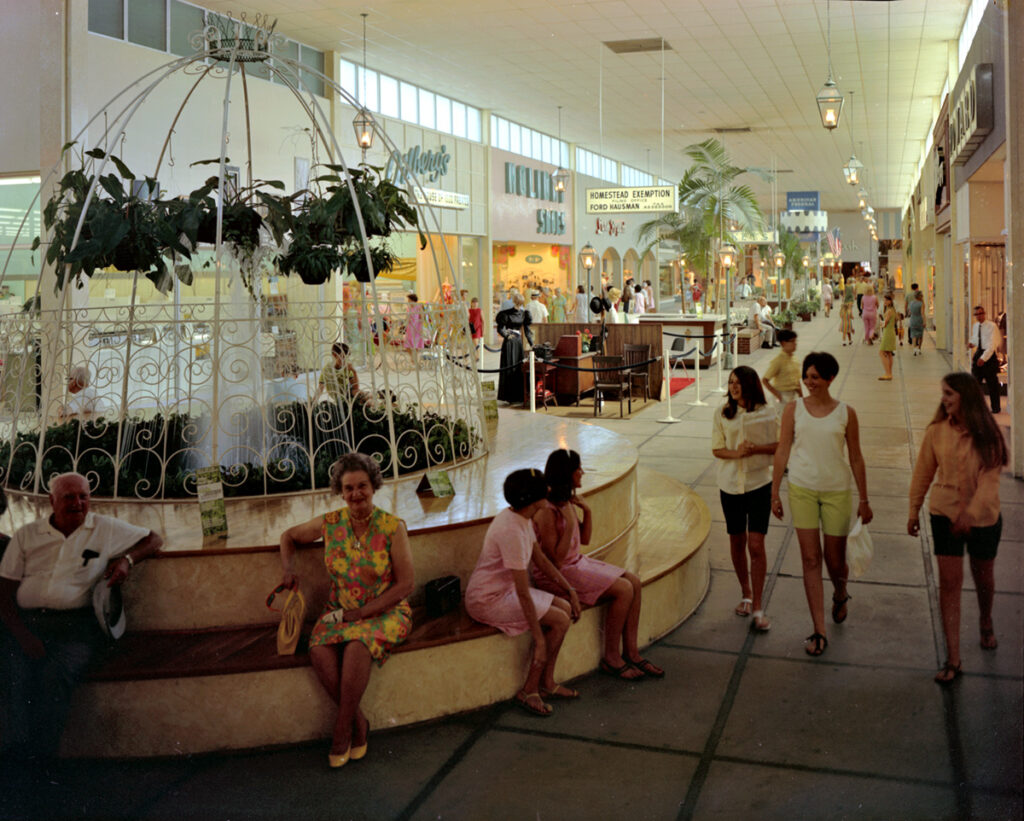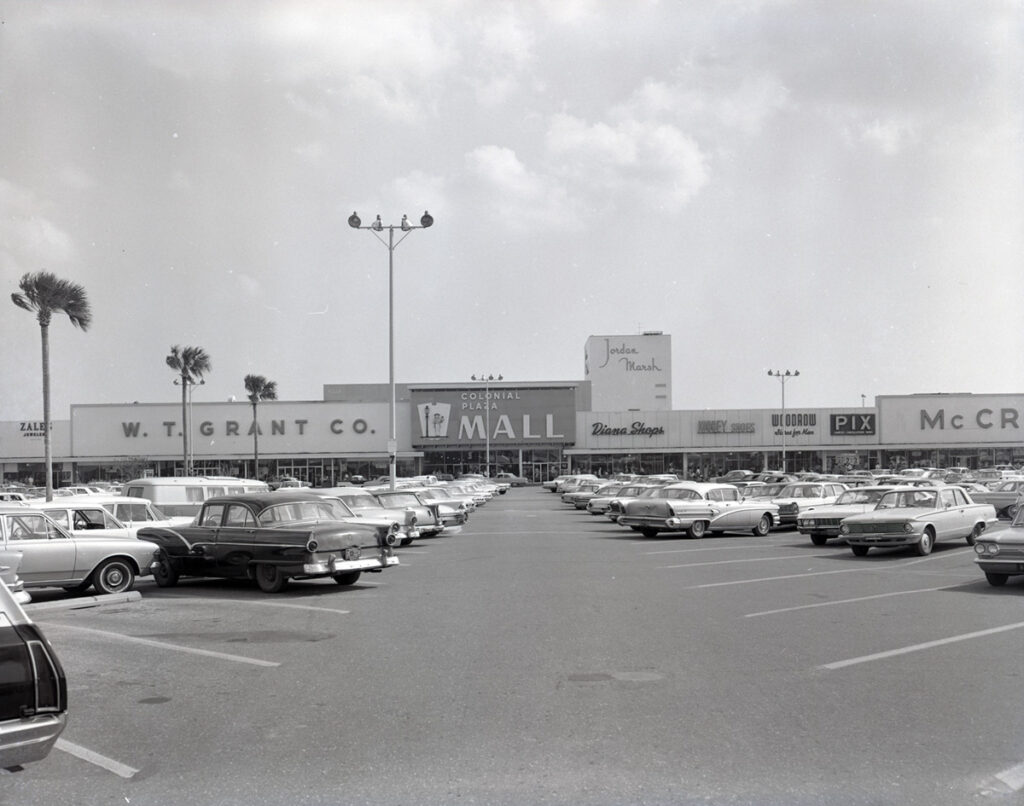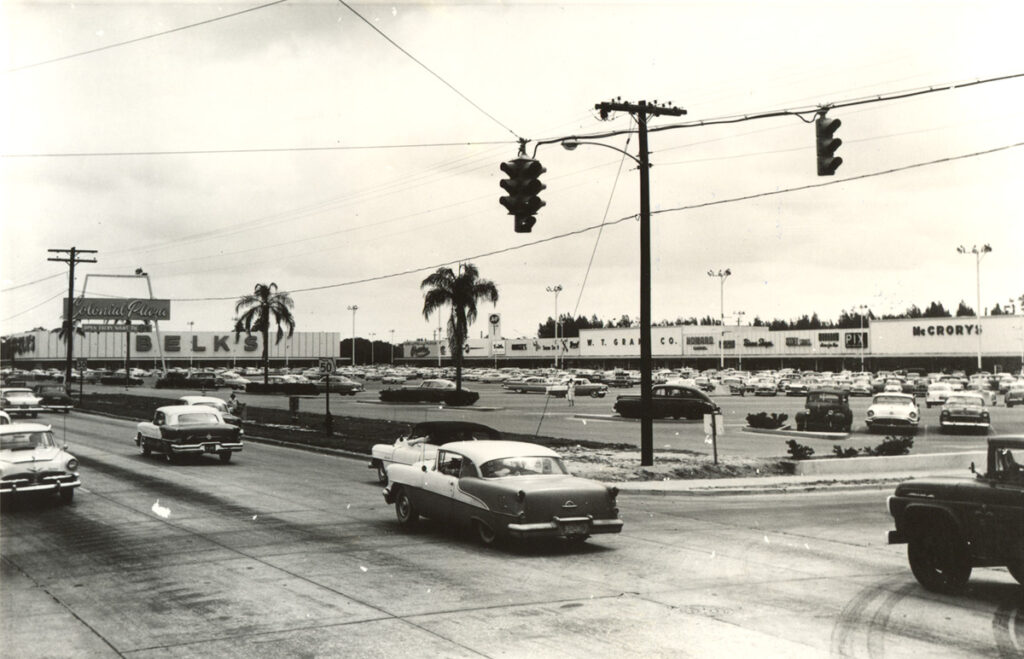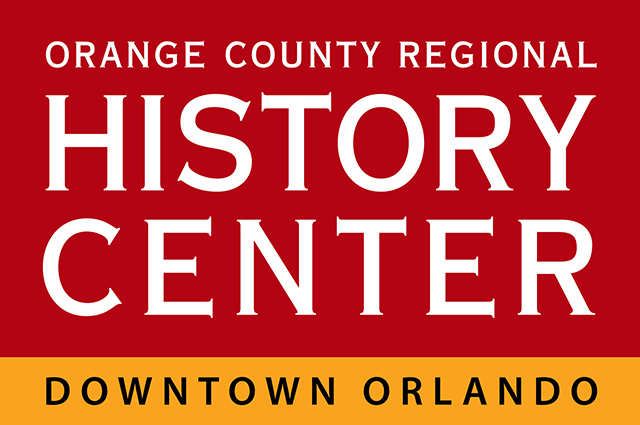By Rachel Williams from the Spring 2025 Edition of Reflections Magazine
“The one-stop shopping center of tomorrow that’s here today” – that was the tagline in the Orlando Sentinel when Colonial Plaza officially opened on Jan. 31, 1956. What might seem like an ordinary shopping center to 21st-century residents was once considered a groundbreaking development. At its inception in the mid-20th century, Colonial Plaza was the largest retail development in Florida, marking a significant milestone in the state’s retail history.
Orlando residents in the 1950s, accustomed to shopping in the downtown district, suddenly had access to a more convenient suburban shopping experience. With 2,000 parking spaces and a variety of stores, Colonial Plaza reflected the city’s rapid postwar growth and the broader trends of suburban sprawl and consumer culture in mid-century America. Over the decades, Colonial Plaza adapted to changing retail landscapes, from a thriving strip mall to a hybrid power center, mirroring the evolution of shopping centers and suburban life in the United States.

Shopping Centers in Historical Context
The idea of centralized shopping centers is as old as commerce itself. Ancient marketplaces such as the Roman forum and Near Eastern bazaars provided spaces for vendors to sell goods, ranging from spices to textiles. By the late 18th and 19th centuries, Europe saw the rise of enclosed shopping arcades, which catered primarily to affluent customers. These arcades featured luxury goods under a single roof, establishing a precedent for the modern shopping mall.
In the United States, early 20th-century shopping revolved around downtown districts. Main Street shopping areas offered essential goods and services, including pharmacies, grocery stores, and clothing retailers. Shoppers navigated busy streets, often on foot, to patronize various stores over multiple blocks. Orlando’s downtown shopping district, centered on Orange Avenue in the 20th century, reflected this trend. In 1914, the Yowell-Duckworth Co. opened Orlando’s first department store (later, Ivey’s) at 1 S. Orange Ave., followed two weeks later by Dickson-Ives across the street. Both buildings made the intersection of Orange Avenue and Central Boulevard a focal point of retail activity for decades.

Suburban Sprawl and the Rise of Colonial Plaza
Orlando experienced explosive growth in the 1920s, fueled by economic prosperity and a housing boom. The city’s population swelled from 9,000 in 1920 to over 27,000 in 1930. Although the Great Depression briefly halted this expansion, the post-World War II era ushered in renewed growth. New industries, including the Martin Company and Tupperware, brought jobs to the region, while the expansion of highways facilitated suburban development. As Orlando residents moved to newly built suburbs, traffic and limited parking made downtown shopping increasingly inconvenient.
In response to the need for a suburban shopping hub, construction of Colonial Plaza began in 1954 on land once part of the T.G. Lee dairy farm. Developer Michael R. Sudakow envisioned a shopping center that would accommodate Orlando’s future growth.
Lowell Fyvolent, Sudakow’s representative, predicted that Colonial Plaza would become a central gathering place for the expanding Orlando-Winter Park area. Conveniently located on Colonial Drive between Bumby Avenue and Primrose Drive, the shopping center was designed to provide ample parking and easy access via major thoroughfares.
Colonial Plaza’s Grand Opening
Colonial Plaza officially opened on Jan. 31, 1956, to overwhelming enthusiasm. Its 2,000-space parking lot proved inadequate for the estimated 150,000 visitors on the opening day, leading to traffic jams along Colonial Drive that stretched for miles. Overflowing parking lots forced visitors to seek out spots in nearby vacant lots and walk to the plaza. Police directed traffic and assisted pedestrians throughout the day.
Colonial Plaza initially housed around 25 stores, including two grocery chains (Publix and A&P), two variety stores (W.T. Grant and McCrory), and a Walgreens pharmacy that relocated from downtown. In March 1956, Belk opened Orlando’s largest department store at Colonial Plaza, complete with the city’s first escalator. Other notable additions included Ronnie’s Restaurant, which would become a local favorite and a cultural touchstone.

Expansion and the Mall Era
Colonial Plaza underwent its first major expansion in 1961, transforming into a partially enclosed, air-conditioned mall with 30 new stores. The centerpiece of this development was a four-story Jordan Marsh department store, featuring escalators staffed by Eastern Air Lines flight attendants during the store’s debut.
By its 1962 reopening, Colonial Plaza had become Florida’s only air-conditioned enclosed mall and the largest shopping center south of Atlanta. The expansion also included a massive parking lot extension, increasing capacity to 15,000 spaces.
In 1973, Colonial Plaza expanded again, adding a larger Belk department store and additional retail space. However, the era of the mall was in full swing, and competition emerged with the opening of the Fashion Square Mall less than a mile away. Built around an existing Sears store, Fashion Square offered a more modern shopping experience. By the 1970s, Orlando was home to six shopping malls, a number that doubled by the 1990s.
Decline and Redevelopment
As the popularity of enclosed malls grew, Colonial Plaza struggled to maintain its relevance. By the early 1990s, its hybrid design of a strip mall combined with an enclosed section felt outdated. By 1994, the plaza had a 50 percent vacancy rate. In 1995, Cousins/Newmarket purchased the property and began redeveloping it into a “power center.” Most of the original buildings were demolished, replaced with standalone big-box retailers and redesigned parking areas.
Today, only a few remnants of the original Colonial Plaza remain. The buildings housing Petco and Barnes & Noble are echoes of the plaza’s mid-century heyday, with Marshall’s in the place of the 1973 Belk store. In 2022, reports surfaced suggesting the current owner, Kimco Realty Corporation, might redevelop portions of the shopping center into mixed-use residential spaces, though no timeline has been established.
The Legacy of Colonial Plaza
Colonial Plaza’s story is emblematic of mid-century suburbanization and the evolution of American retail. Once a pioneering shopping destination, it showcased the shift from downtown districts to suburban centers designed for automobile convenience. Its rise and transformation reflect broader economic, cultural, and urban development trends that shaped Orlando and countless other cities across the United States.
While Colonial Plaza today may lack the grandeur it once held, its legacy as Florida’s first major shopping center remains a significant chapter in the history of Orlando’s growth and consumer culture.

